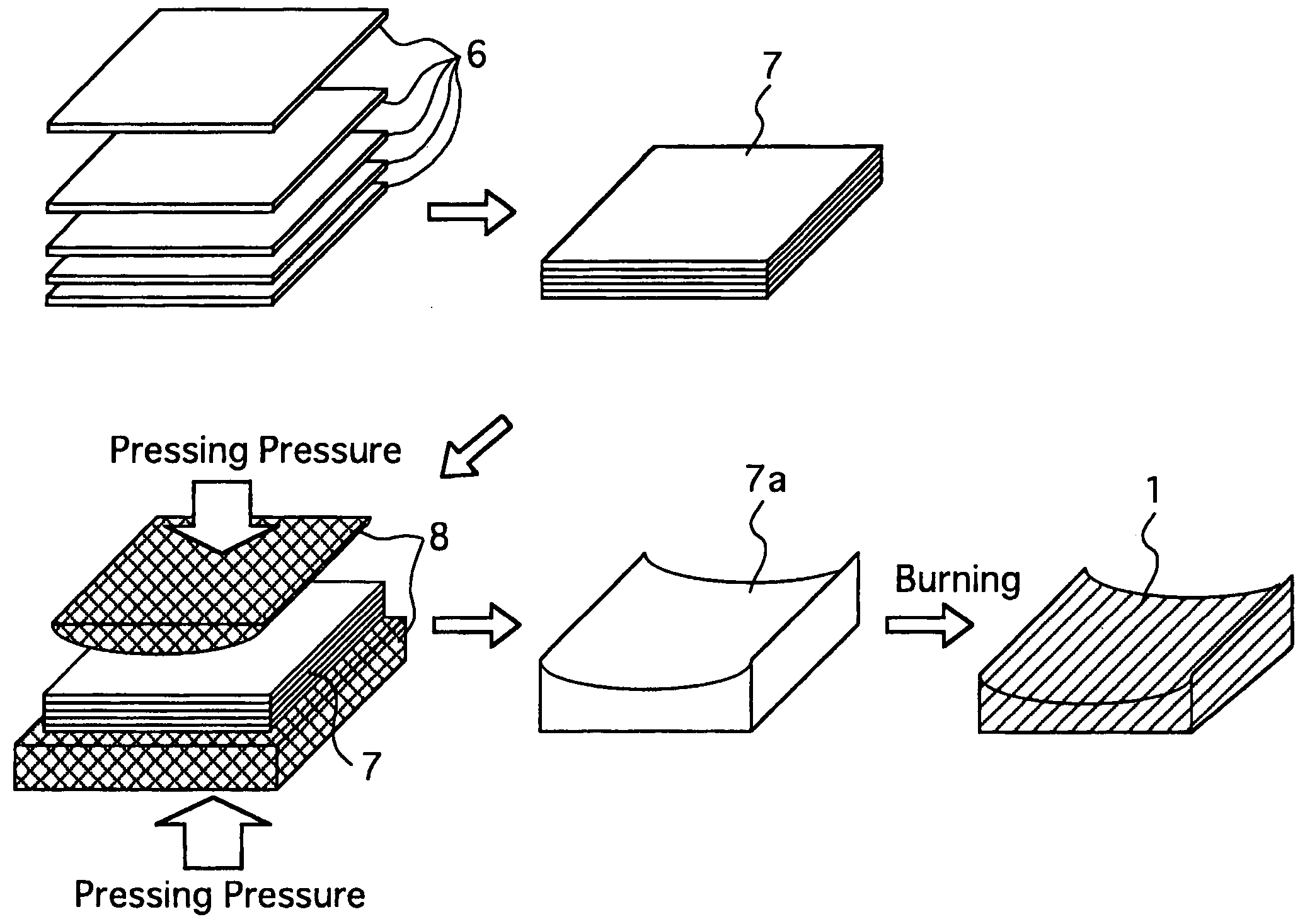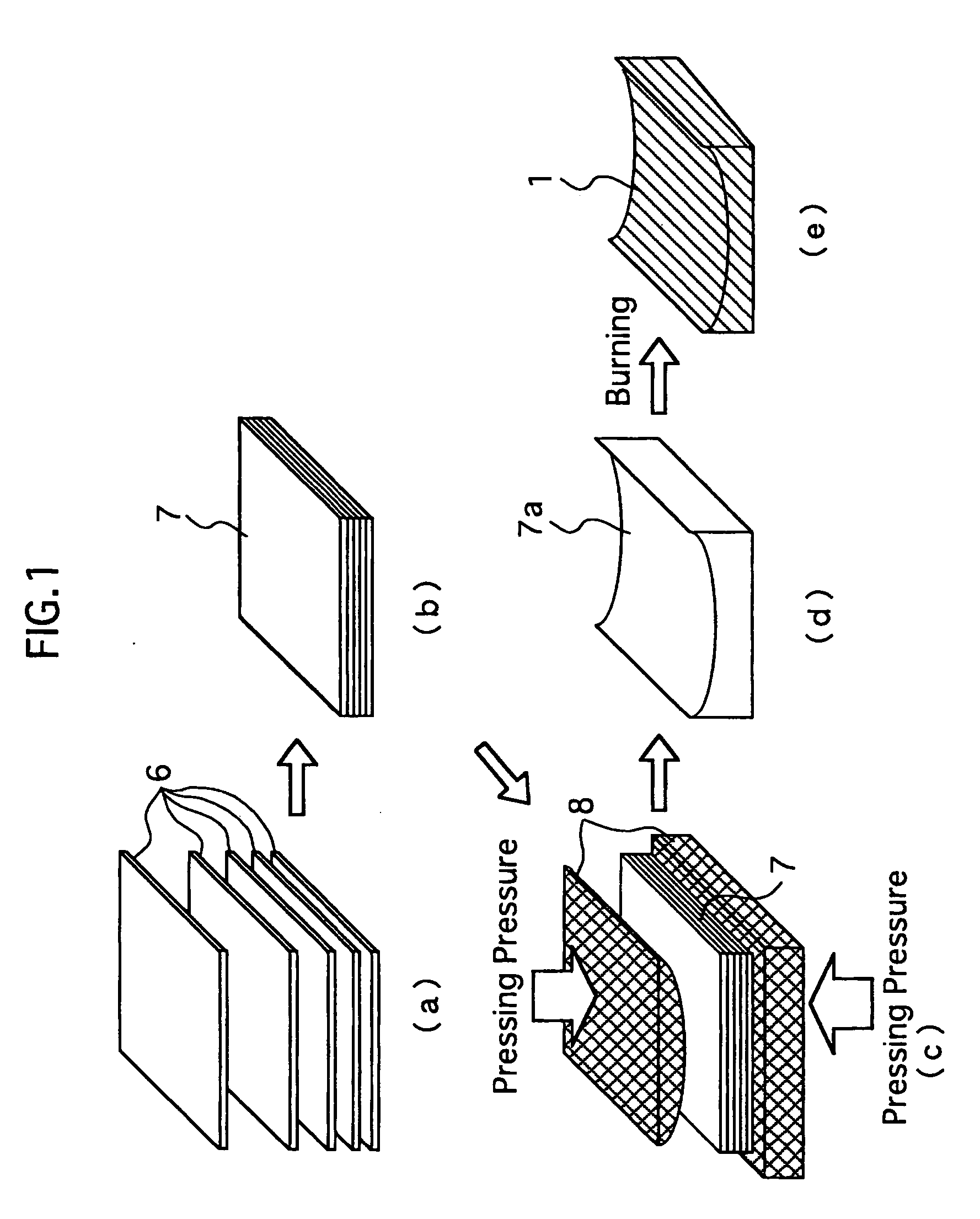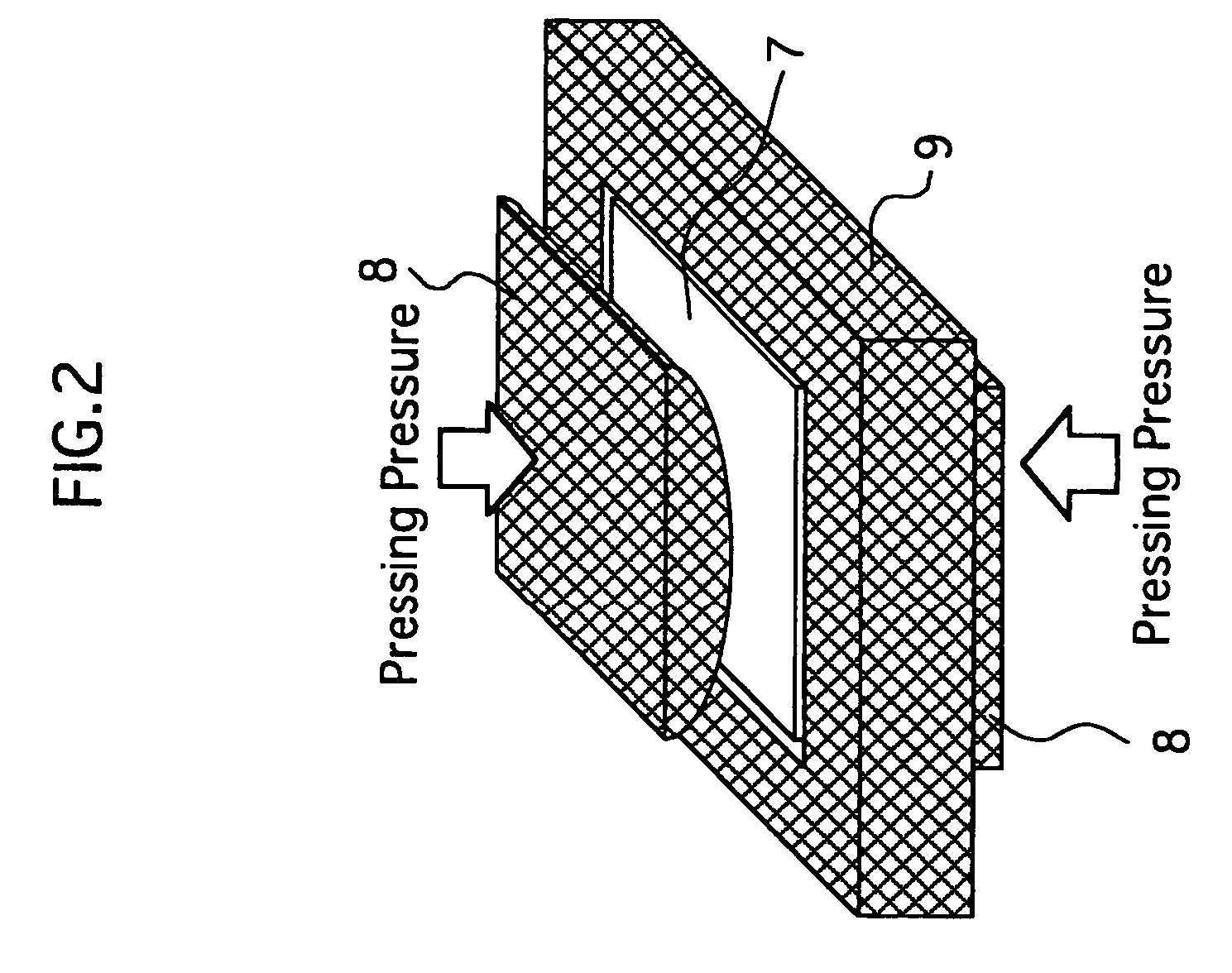Piezoelectric body manufacturing method, piezoelectric body, ultrasonic probe, ultrasonic diagnosing device, and nondestructive inspection device
a manufacturing method and piezoelectric technology, applied in the field of piezoelectric/electrostrictive device details, instruments, applications, etc., can solve the problems of uneven thickness of piezoelectric devices, easy cracking of piezoelectric devices, and conventional ultrasonic probes, etc., to achieve high precision, reliably operate, and high reliability
- Summary
- Abstract
- Description
- Claims
- Application Information
AI Technical Summary
Benefits of technology
Problems solved by technology
Method used
Image
Examples
first embodiment
[0052] [First Embodiment]
[0053] Referring now to FIG. 1 of the drawings, there is shown a first preferred embodiment of a method of producing a piezoelectric device 1, comprising: molding and laminating processes (first step (a)) of molding one or more raw material elements 6 including at least one piezoelectric material to form a predetermined piezoelectric element 7 (raw piezoelectric element); and a pressing process (second step (b)) imparting pressing forces to the piezoelectric element 7 to have the piezoelectric element 7 molded into a predetermined shape.
[0054] The present embodiment of the piezoelectric device 1 has a plane first surface and a concave second surface opposite to the first surface. The second surface has a thickness concavely curved in a manner that the thickness of the second surface gradually increases from a center portion toward end portions. The piezoelectric device 1 in part constitutes an ultrasonic probe (shown FIG. 20) to be used for an ultrasonic di...
second embodiment
[0067] [Second Embodiment]
[0068] Referring then to FIG. 3 of the drawings, there is shown a second preferred embodiment of a method of producing a piezoelectric device 1. The present embodiment of the producing method is different from the first embodiment of the producing method in the fact that the molding and laminating process (first step (a)) further has a process of laminating a plurality of raw material elements 6 (sheet-like raw material elements) respectively having thicknesses collectively in accordance with a thickness distribution of the piezoelectric device. Preferably, the shape and the number of sheet-like raw material elements 6 to be laminated should be calculated in accordance with the thickness distribution of the piezoelectric device 1. The present embodiment of the producing method has an additional effect of being capable of producing a piezoelectric device 1 having a predetermined thickness distribution with increased flexibility by adaptively laminating a plu...
third embodiment
[0080] [Third Embodiment]
[0081] Referring then to FIG. 5 of the drawings, there is shown a third preferred embodiment of a method of producing a piezoelectric device 1. The present embodiment of the producing method is different from the first embodiment of the producing method in the fact that the molding and laminating process (first step (a)) further has a process of laminating one or more raw material elements respectively formed with through bores in accordance with a thickness distribution of the piezoelectric device 1. The present embodiment of the producing method has an additional effect of being capable of producing a piezoelectric device 1 having a predetermined shape and thickness distribution with increased flexibility.
[0082] The present embodiment of the piezoelectric device 1 has a plane first surface and a concave second surface opposite to the first surface. The second surface has a thickness concavely curved in a manner that the thickness of the second surface gra...
PUM
| Property | Measurement | Unit |
|---|---|---|
| thickness | aaaaa | aaaaa |
| thickness | aaaaa | aaaaa |
| thickness | aaaaa | aaaaa |
Abstract
Description
Claims
Application Information
 Login to View More
Login to View More - R&D
- Intellectual Property
- Life Sciences
- Materials
- Tech Scout
- Unparalleled Data Quality
- Higher Quality Content
- 60% Fewer Hallucinations
Browse by: Latest US Patents, China's latest patents, Technical Efficacy Thesaurus, Application Domain, Technology Topic, Popular Technical Reports.
© 2025 PatSnap. All rights reserved.Legal|Privacy policy|Modern Slavery Act Transparency Statement|Sitemap|About US| Contact US: help@patsnap.com



